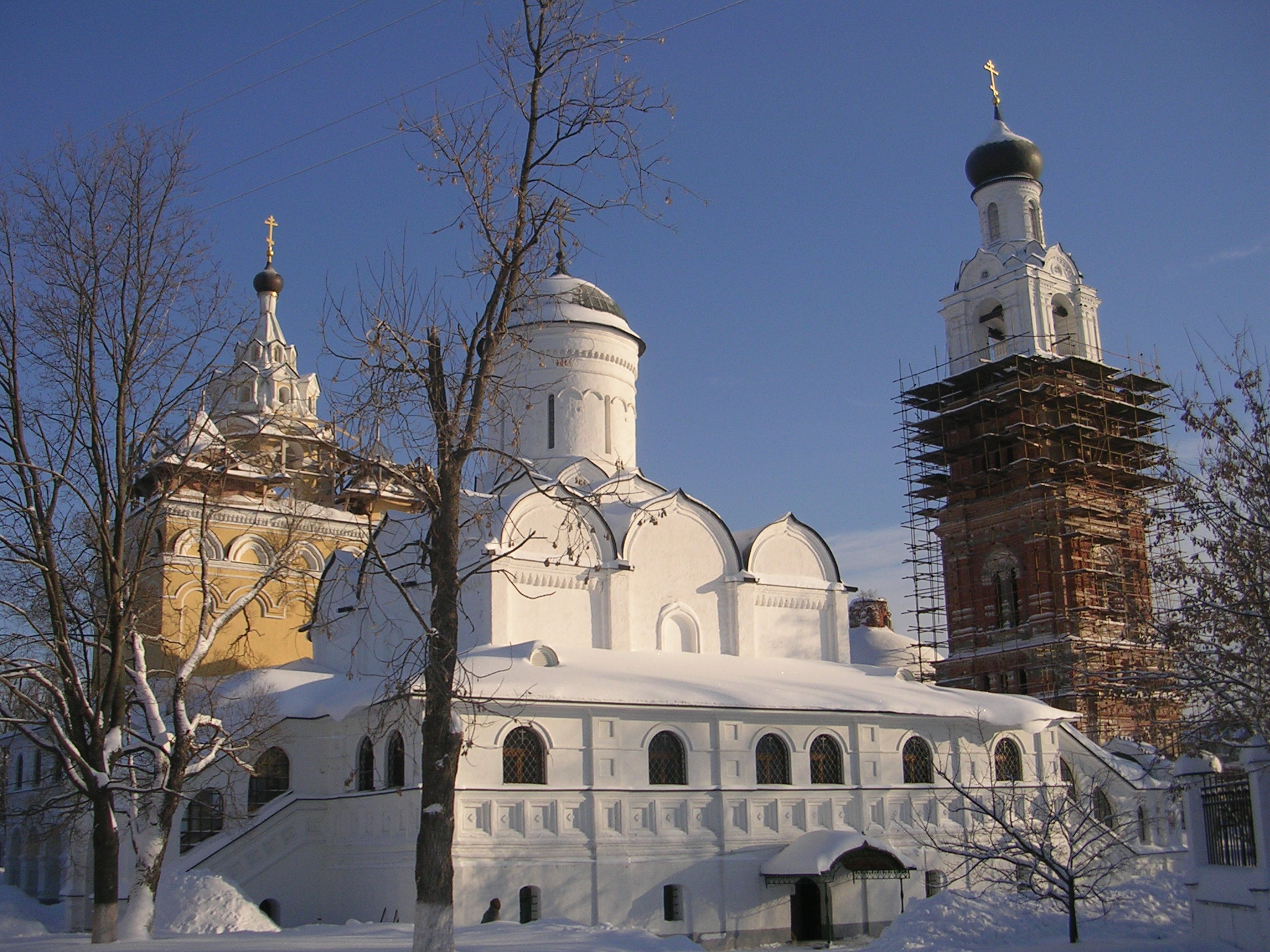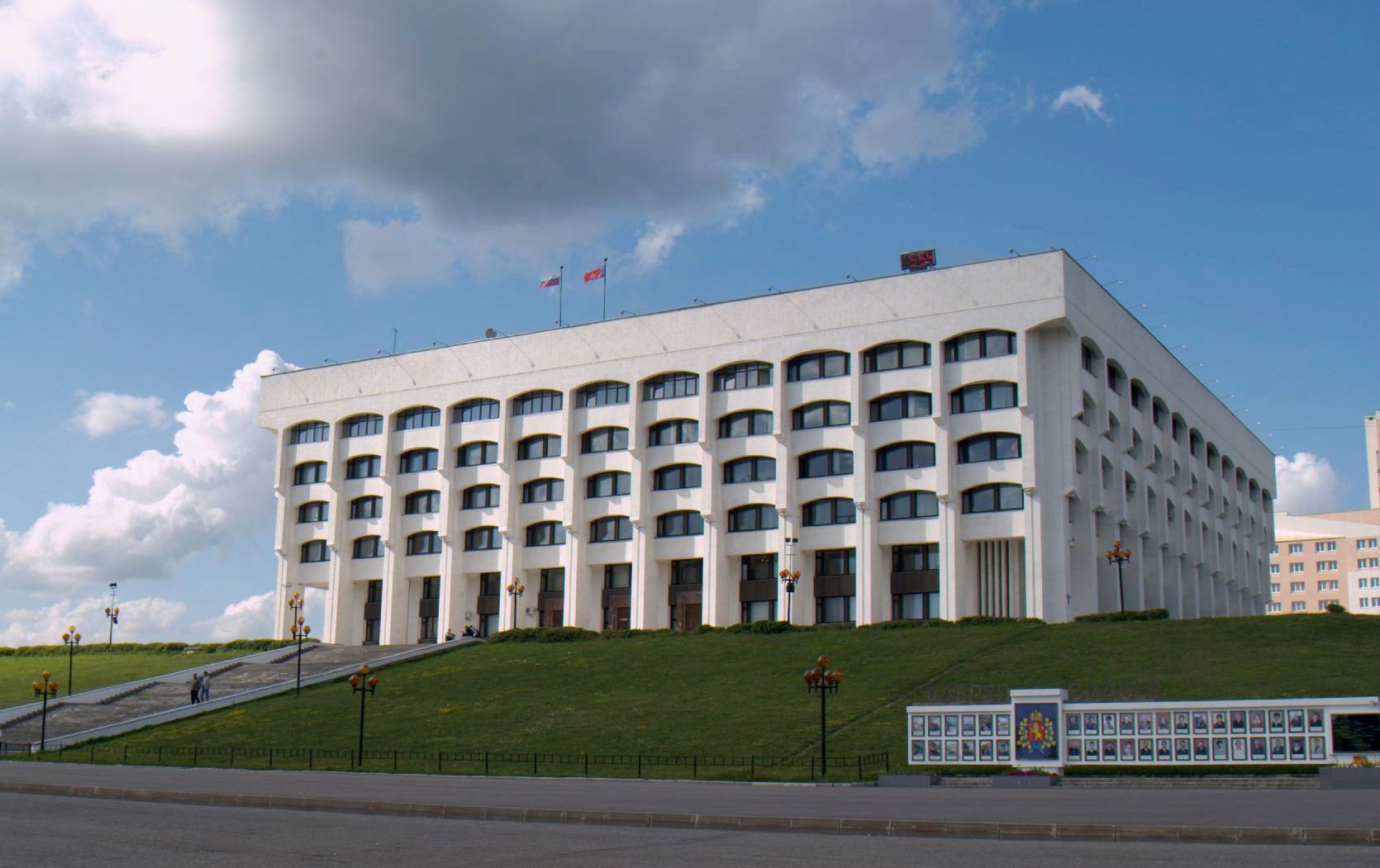|
Kirzhach
Kirzhach (russian: Киржа́ч) is a town and the administrative center of Kirzhachsky District in Vladimir Oblast, Russia, located on the Kirzhach River in the west of the oblast, west of Vladimir and south of Alexandrov. Population: Etymology The town is named after the Kirzhach River. The root of the name (''kirzh'') corresponds to a Moksha or Erzya word meaning "left". History It was established in the 14th century as a '' sloboda'' assigned to the Annunciation Monastery. The latter was established by Saint Sergius of Radonezh, who lived in the area between 1354 and 1358. For most of its history, the abbey remained heavily dependent upon the Trinity Lavra of St. Sergius, which lies to the west. After the monastery was disbanded in 1764, the ''sloboda'' was granted municipal rights in 1778. Thereafter, Kirzhach, as many other towns in the vicinity, developed primarily as a textile center. On October 12, 2004, the settlement of Krasny Oktyabr was merged with ... [...More Info...] [...Related Items...] OR: [Wikipedia] [Google] [Baidu] |
Kirzhach COA (Vladimir Governorate) (1781)
Kirzhach (russian: Киржа́ч) is a town and the administrative center of Kirzhachsky District in Vladimir Oblast, Russia, located on the Kirzhach River in the west of the oblast, west of Vladimir and south of Alexandrov. Population: Etymology The town is named after the Kirzhach River. The root of the name (''kirzh'') corresponds to a Moksha or Erzya word meaning "left". History It was established in the 14th century as a ''sloboda'' assigned to the Annunciation Monastery. The latter was established by Saint Sergius of Radonezh, who lived in the area between 1354 and 1358. For most of its history, the abbey remained heavily dependent upon the Trinity Lavra of St. Sergius, which lies to the west. After the monastery was disbanded in 1764, the ''sloboda'' was granted municipal rights in 1778. Thereafter, Kirzhach, as many other towns in the vicinity, developed primarily as a textile center. On October 12, 2004, the settlement of Krasny Oktyabr was merged wit ... [...More Info...] [...Related Items...] OR: [Wikipedia] [Google] [Baidu] |
Kirzhachsky District
Kirzhachsky District (russian: Киржа́чский райо́н) is an administrativeLaw #130-OZ and municipalLaw #36-OZ district (raion), one of the sixteen in Vladimir Oblast, Russia. It is located in the west of the oblast. The area of the district is . Its administrative center is the town of Kirzhach Kirzhach (russian: Киржа́ч) is a town and the administrative center of Kirzhachsky District in Vladimir Oblast, Russia, located on the Kirzhach River in the west of the oblast, west of Vladimir and south of Alexandrov. Population: Et .... Population: 45,188 ( 2002 Census); The population of Kirzhach accounts for 70.5% of the district's total population. References Notes Sources * * * {{Authority control Districts of Vladimir Oblast ... [...More Info...] [...Related Items...] OR: [Wikipedia] [Google] [Baidu] |
Kirzhach River
The Kirzhach (russian: Киржа́ч) is a river in Vladimir Oblast, Russia. It is a left tributary of the Klyazma. The length of the river is 133 km. The area of its drainage basin is 1770 km².«Река КИРЖАЧ(БОЛЬШОЙ КИРЖАЧ)» Russian State Water Registry The Kirzhach originates at the confluence of the Bolshoy Kirzhach and the Maly Kirzhach near Ivashevo Village. The river flows from north to south and empties into the Klyazma at Gorodishchi. The Kirzhach is a shallow river with a maximum depth of 4 m and a maximum width of 70 m. It is not navigable for larger vessels, however it is very popular for and |
Vladimir Oblast
Vladimir Oblast (russian: Влади́мирская о́бласть, ''Vladimirskaya oblast'') is a federal subjects of Russia, federal subject of Russia (an oblast). Its closest border 66 Meter, km east of central Moscow, the administrative center is the types of inhabited localities in Russia, city of Vladimir, Russia, Vladimir, which is located east of Moscow. As of the Russian Census (2010), 2010 Census, the oblast's population was 1,443,693. The UNESCO World Heritage Site, World Heritage List includes the 12th-century cathedrals of Vladimir, Russia, Vladimir, Suzdal, Bogolyubovo, Vladimir Oblast, Bogolyubovo, and Kideksha. Geography Vladimir Oblast borders Moscow Oblast, Moscow, Yaroslavl Oblast, Yaroslavl, Ivanovo Oblast, Ivanovo, Ryazan Oblast, Ryazan, and Nizhny Novgorod Oblasts. The oblast is situated in the center of the East European Plain. The Klyazma River, Klyazma and the Oka River, Oka are the most important rivers. There are approximately three hundred lake ... [...More Info...] [...Related Items...] OR: [Wikipedia] [Google] [Baidu] |
Vladimir Seryogin
Vladimir Sergeyevich Seryogin (russian: Владимир Сергеевич Серёгин; 7 July 1922 – 27 March 1968) was a Soviet test pilot. Vladimir Seryogin became a volunteer of the Red Army after grammar school. His flying abilities recognized, he was directed to piloting. His performance on the Eastern Front of the Second World War resulted in his being awarded several medals including the title Hero of the Soviet Union. After conclusion of the war Seryogin remained in the Soviet Air Force. After completing an engineering course, he went on to work as a test pilot for the Soviet Air Force Test Institute. In addition, Seryogin was the commanding officer of the Cosmonauts' Flight Preparation organization. On 27 March 1968, while on a routine training flight from Chkalovsky Air Base with his colleague and friend Yuri Gagarin—the first man ever to have flown in space—the MiG-15UTI they were piloting crashed near the town of Kirzhach. Both pilots were killed in the cra ... [...More Info...] [...Related Items...] OR: [Wikipedia] [Google] [Baidu] |
Yuri Gagarin
Yuri Alekseyevich Gagarin; Gagarin's first name is sometimes transliterated as ''Yuriy'', ''Youri'', or ''Yury''. (9 March 1934 – 27 March 1968) was a Soviet pilot and cosmonaut who became the first human to journey into outer space. Travelling in the Vostok 1 capsule, Gagarin completed one orbit of Earth on 12 April 1961. By achieving this major milestone in the Space Race he became an international celebrity, and was awarded many medals and titles, including Hero of the Soviet Union, his nation's highest honour. Gagarin was born in the Russian village of Klushino, and in his youth was a foundryman at a steel plant in Lyubertsy. He later joined the Soviet Air Forces as a pilot and was stationed at the Luostari/Pechenga (air base), Luostari Air Base, near the Norwegian border, before his selection for the Soviet space programme with five other cosmonauts. Following his spaceflight, Gagarin became deputy training director of the Yuri Gagarin Cosmonaut Training Center, Cos ... [...More Info...] [...Related Items...] OR: [Wikipedia] [Google] [Baidu] |
Convent
A convent is a community of monks, nuns, religious brothers or, sisters or priests. Alternatively, ''convent'' means the building used by the community. The word is particularly used in the Catholic Church, Lutheran churches, and the Anglican Communion. Etymology and usage The term ''convent'' derives via Old French from Latin ''conventus'', perfect participle of the verb ''convenio'', meaning "to convene, to come together". It was first used in this sense when the eremitical life began to be combined with the cenobitical. The original reference was to the gathering of mendicants who spent much of their time travelling. Technically, a monastery is a secluded community of monastics, whereas a friary or convent is a community of mendicants (which, by contrast, might be located in a city), and a canonry is a community of canons regular. The terms abbey and priory can be applied to both monasteries and canonries; an abbey is headed by an abbot, and a priory is a lesser dependent ho ... [...More Info...] [...Related Items...] OR: [Wikipedia] [Google] [Baidu] |
Bell Tower
A bell tower is a tower that contains one or more bells, or that is designed to hold bells even if it has none. Such a tower commonly serves as part of a Christian church, and will contain church bells, but there are also many secular bell towers, often part of a municipal building, an educational establishment, or a tower built specifically to house a carillon. Church bell towers often incorporate clocks, and secular towers usually do, as a public service. The term campanile (, also , ), deriving from the Italian ''campanile'', which in turn derives from ''campana'', meaning "bell", is synonymous with ''bell tower''; though in English usage campanile tends to be used to refer to a free standing bell tower. A bell tower may also in some traditions be called a belfry, though this term may also refer specifically to the substructure that houses the bells and the ringers rather than the complete tower. The tallest free-standing bell tower in the world, high, is the Mortegliano B ... [...More Info...] [...Related Items...] OR: [Wikipedia] [Google] [Baidu] |
Grand Duchy Of Moscow
The Grand Duchy of Moscow, Muscovite Russia, Muscovite Rus' or Grand Principality of Moscow (russian: Великое княжество Московское, Velikoye knyazhestvo Moskovskoye; also known in English simply as Muscovy from the Latin ) was a Rus' principality of the Late Middle Ages centered on Moscow, and the predecessor state of the Tsardom of Russia in the early modern period. It was ruled by the Rurik dynasty, who had ruled Rus' since the foundation of Novgorod in 862. Ivan III the Great titled himself as Sovereign and Grand Duke of All Rus' (russian: государь и великий князь всея Руси, gosudar' i velikiy knyaz' vseya Rusi). The state originated with the rule of Alexander Nevsky of the Rurik dynasty, when in 1263, his son, Daniel I, was appointed to rule the newly created Grand Principality of Moscow, which was a vassal state to the Mongol Empire (under the "Tatar Yoke"), and which eclipsed and eventually absorbed its parent duchy ... [...More Info...] [...Related Items...] OR: [Wikipedia] [Google] [Baidu] |
Ivan The Terrible
Ivan IV Vasilyevich (russian: Ива́н Васи́льевич; 25 August 1530 – ), commonly known in English as Ivan the Terrible, was the grand prince of Moscow from 1533 to 1547 and the first Tsar of all Russia from 1547 to 1584. Ivan was the son of Vasili III, the Rurikid ruler of the Grand Duchy of Moscow. He was appointed grand prince after his father's death, when he was three years old. A group of reformers known as the "Chosen Council" united around the young Ivan, declaring him tsar (emperor) of all Rus' in 1547 at the age of 16 and establishing the Tsardom of Russia with Moscow as the predominant state. Ivan's reign was characterised by Russia's transformation from a medieval state to an empire under the tsar but at an immense cost to its people and its broader, long-term economy. During his youth, he conquered the khanates of Kazan and Astrakhan. After he had consolidated his power, Ivan rid himself of the advisers from the "Chosen Council" and triggered the ... [...More Info...] [...Related Items...] OR: [Wikipedia] [Google] [Baidu] |
Katholikon
A ''katholikon'' or catholicon ( gr, καθολικόν) or ''sobor'' ( Slavonic: съборъ) refers to one of three things in the Eastern Orthodox Church: * The cathedral of a diocese. * The major church building (temple) of a monastery corresponding to a conventual church in Western Christianity. * A large church in a city at which all the faithful of the city gather to celebrate certain important feasts rather than go to their local parish church. The name derives from the fact that it is (usually) the largest church where all gather together to celebrate the major feast days of the liturgical year. In Russia, it is common for a katholikon to have a smaller church in the basement which can be more easily heated in the winter. A ''katholikon'' may have special architectural features in it, such as a ''kathedra'' (episcopal throne), or both an ''esonarthex'' (inner-narthex) and ''exonarthex'' (outer narthex), used for special services such as the Paschal vigil or a lity. Th ... [...More Info...] [...Related Items...] OR: [Wikipedia] [Google] [Baidu] |

_(1781).png)

.jpg)


